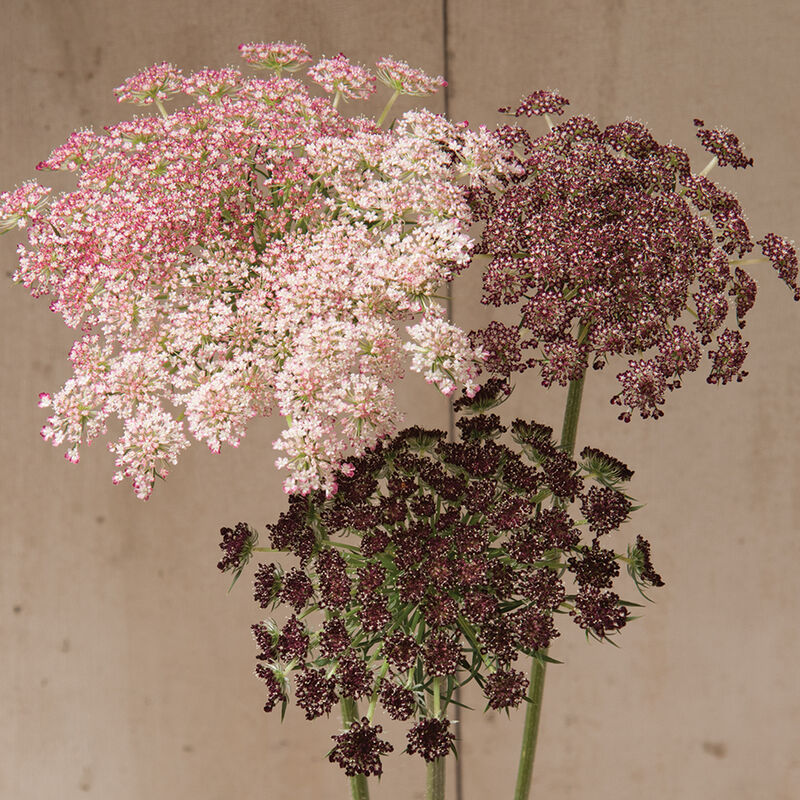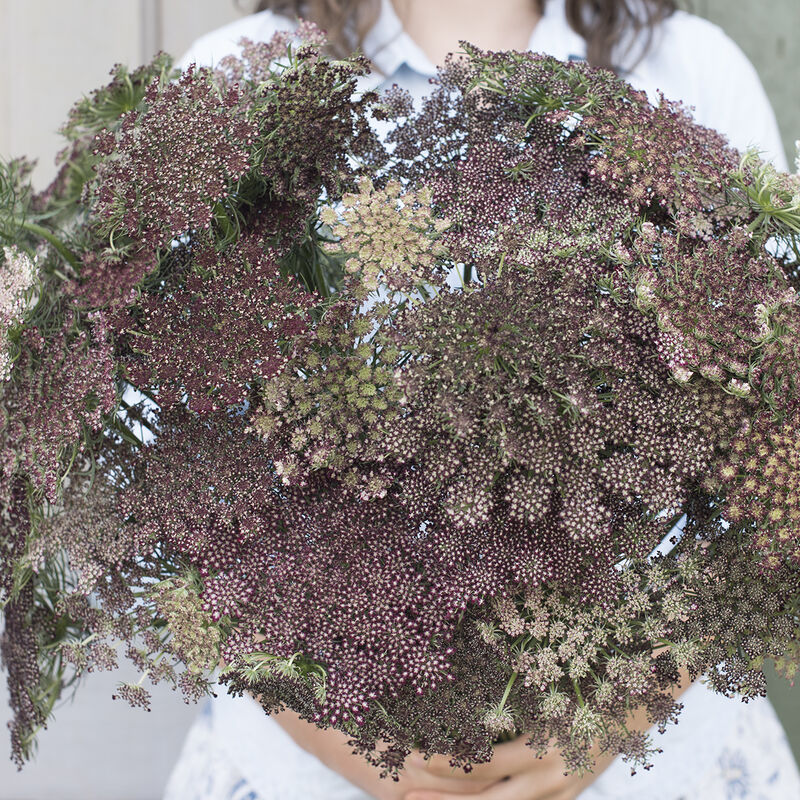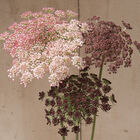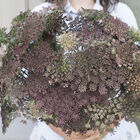Dara Daucus Seed
Product ID:1968.541968
Dara Daucus Seed
Product ID:1968.541968
Outstanding cut flower that's actually a carrot.
Attractive 3–5" lacy umbels atop strong, sturdy, upright stems. Flowers in shades of dark purple, pink, or white. Highly productive with 7–15 stems per plant. Long lasting in bouquets. Also known as Queen Anne's lace, ornamental carrot, and wild carrot.Specs:
- This product does not ship to the following countries: Australia, Japan, Republic of Korea, New Zealand, Taiwan.
- This product does not ship to the following states and jurisdictions: WA.
DAYS TO GERMINATION:
12-16 days at 60-65°F (16-18°C)SOWING:
Direct seed (recommended) - In early spring after last frost (sow in the fall in the South). Sow seed thinly in rows, covering lightly. Make 2-3 successive sowings, 2 weeks apart for a continuous summer harvest. Transplant - Sow 4-6 weeks before planting out. When first true leaves appear, transplant into larger containers. Harden off and transplant outdoors after last frost. Tips: chill seed at 40-45°F(5-8°C) for 1-2 weeks prior to sowing in the greenhouse. Cooler temperatures of 58-62°F(14-17°C) are best for seedling establishment. Support may be needed if grown in windy areas.LIGHT PREFERENCE:
Sun.PLANT HEIGHT:
36-50" May need support if exposed to windy areas.PLANT SPACING:
3-12".HARDINESS ZONES:
Annual.STEM LENGTH:
12 -50".HARVEST:
Harvesting before 80% of flowers are open tends to reduce the uptake of water and cause the flowers to wilt. Dried: When the flowers are fully open and with no hint of pollen shed.SOIL:
Average, well-drained soil. Established plants will tolerate dry soils.USES:
Excellent cut flower. Backs of beds and borders.SCIENTIFIC NAMES:
Ammi spp., Daucus spp.ALTERNATE NAMES:
Queen Anne's lace, false queen Anne's lace, ornamental carrot, wild carrot, lace flower, false bishop's weed, large bullwort, bishop's weed, toothpickweedJohnny's is committed to your success, every step of the way.
We want you, our customer, to be 100% satisfied with all of our seeds, tools, and supplies.
If anything you purchase from us proves unsatisfactory, we will either replace the item or refund the purchase price.















